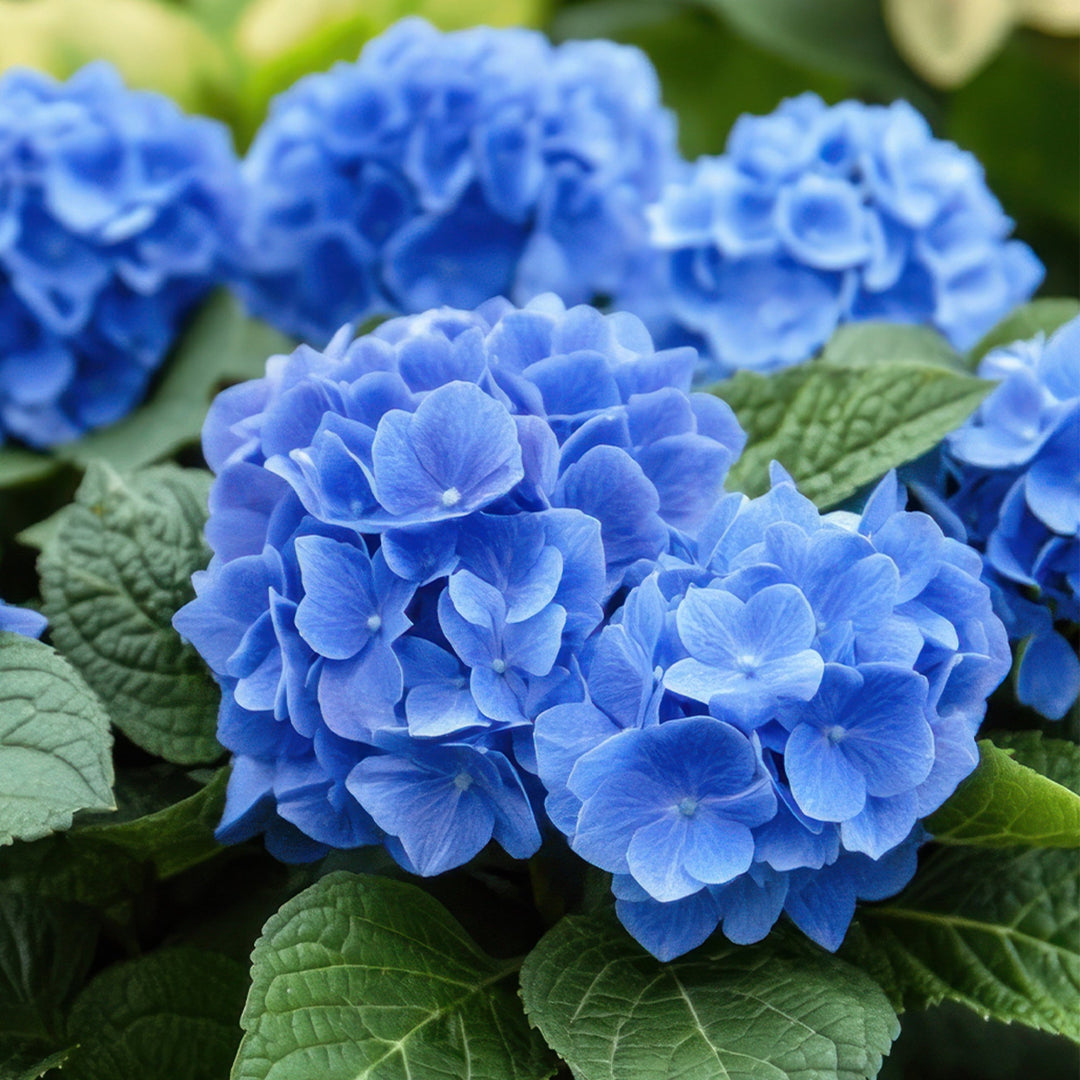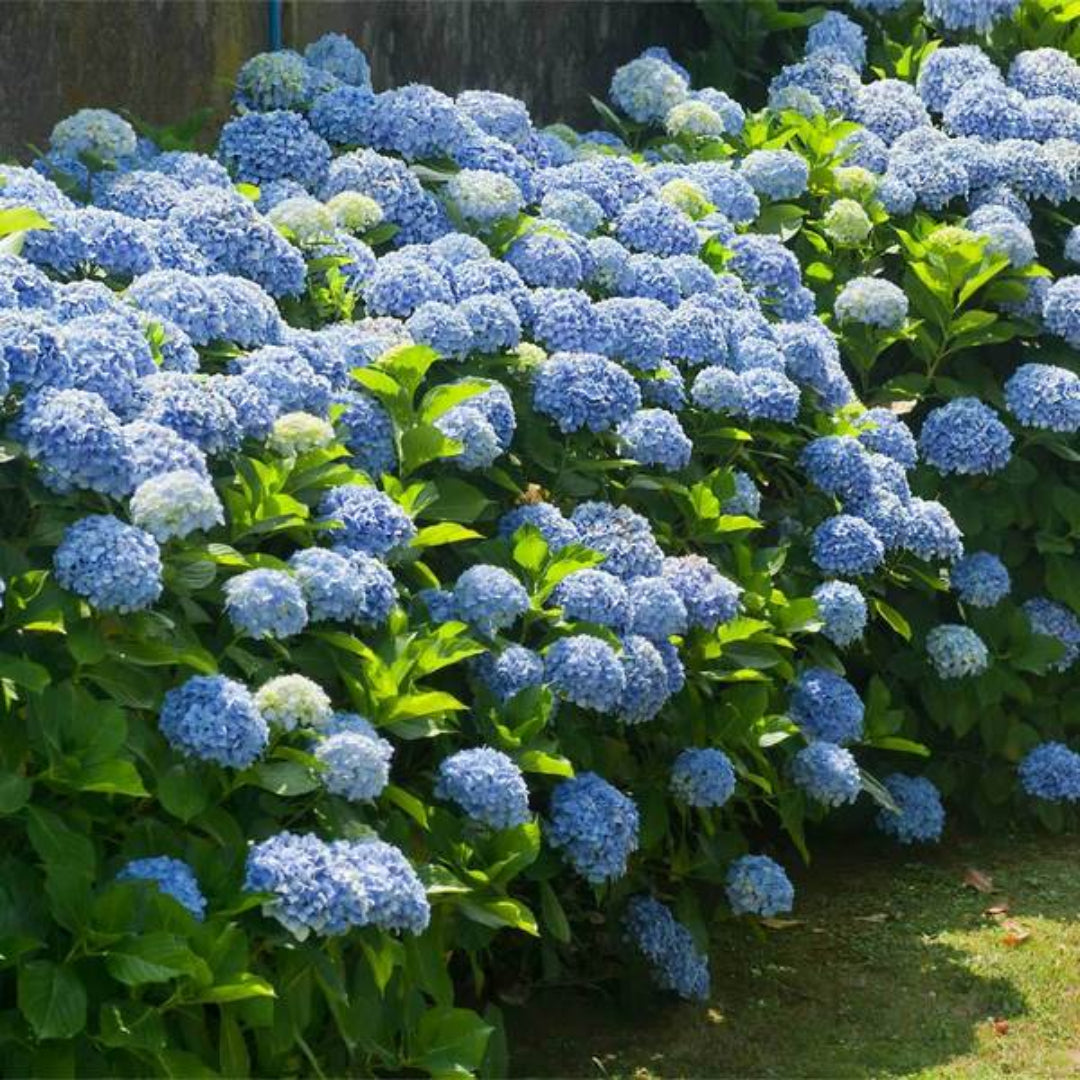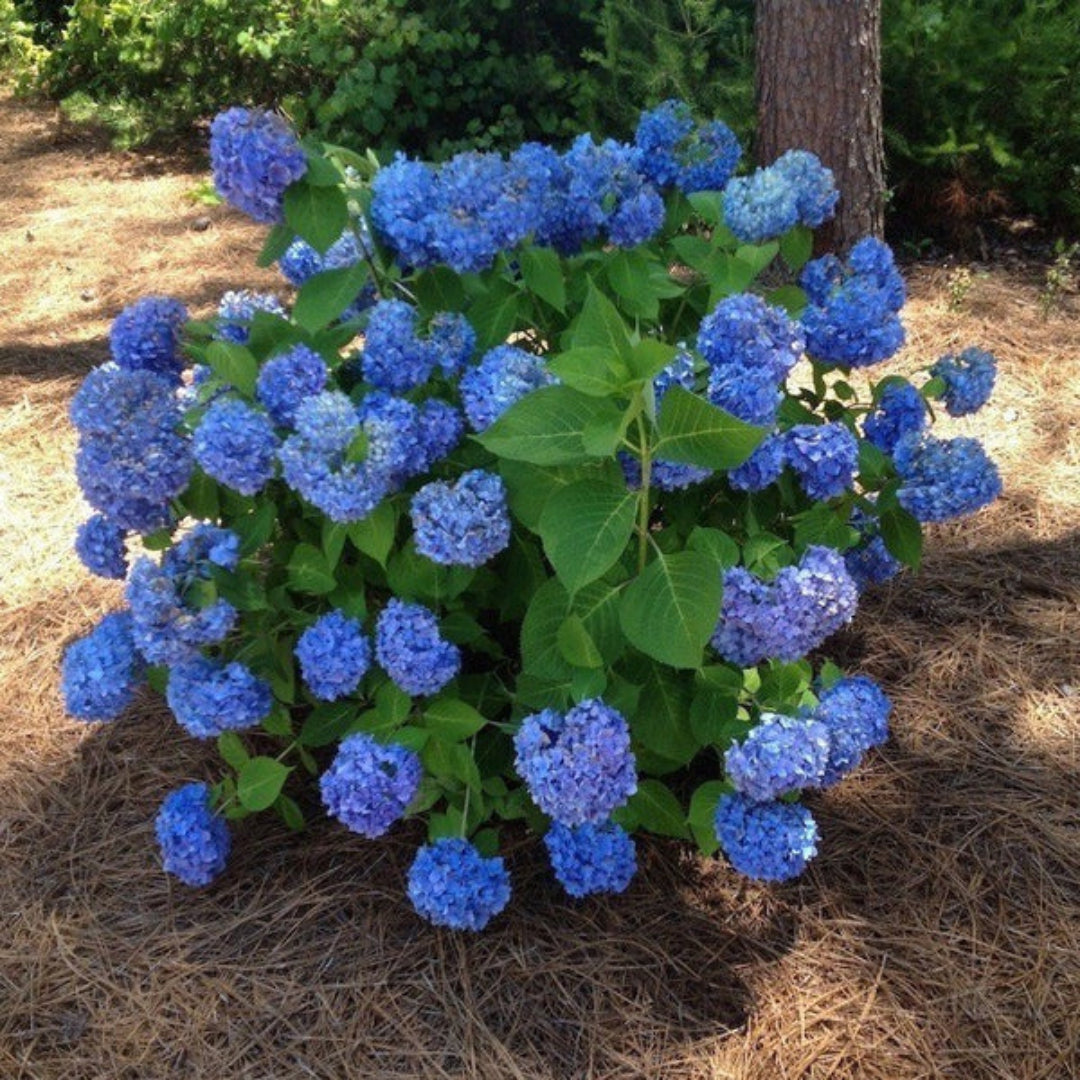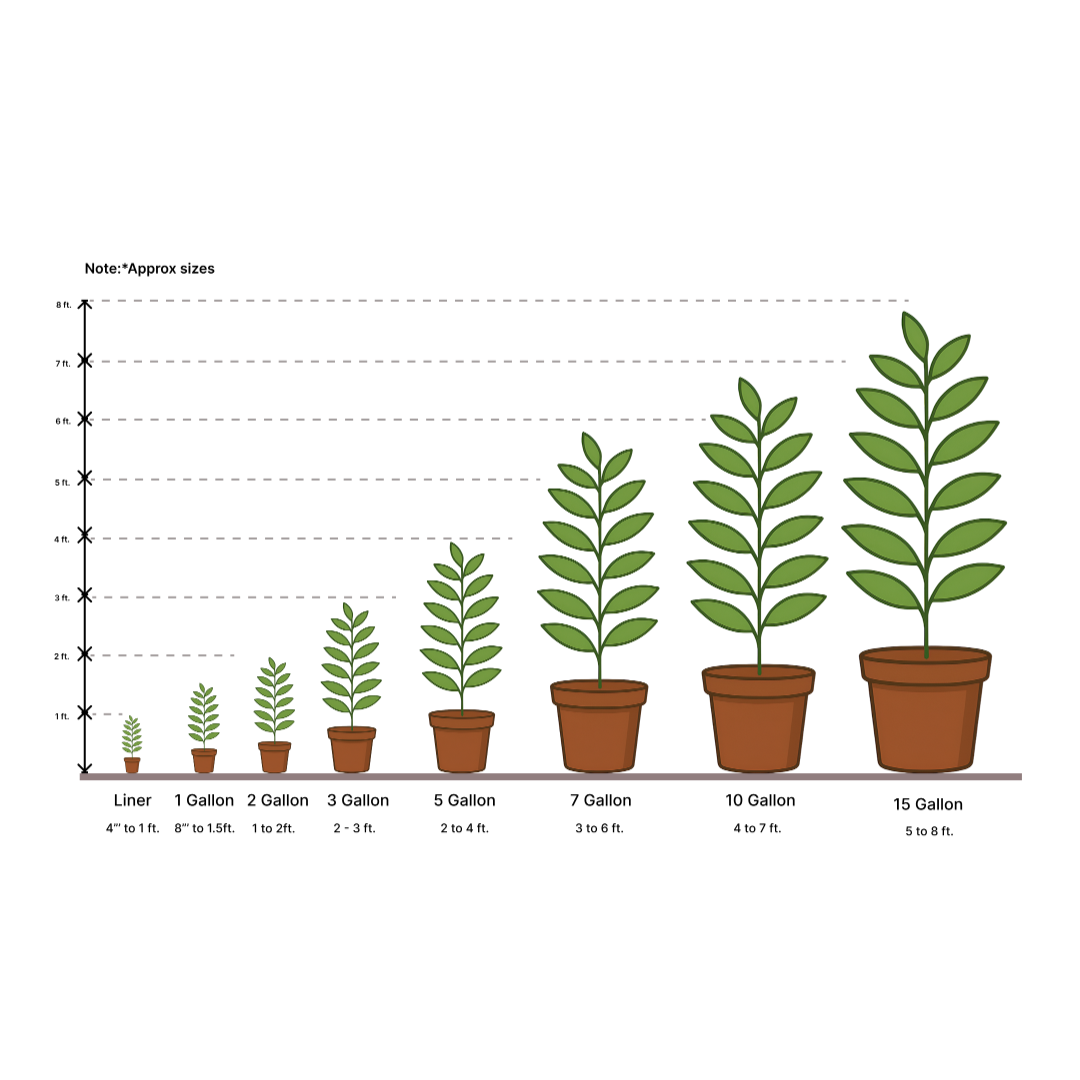





Product Details
Description
Zones

Plant Care Tips
Local search
Customer Service
Pixies Gardens
2024 Mcdaniel Mill Road Conyers GA 30094
Email: cs@pixiesgardens.com
Frequently Asked Questions
What is a Nikko Blue Hydrangea?
The Nikko Blue Hydrangea is a popular variety of Hydrangea macrophylla known for its stunning blue blooms. It produces large, rounded clusters of vibrant blue flowers that add color and elegance to any garden or landscape. This shrub thrives in zones 5-9 and is a favorite choice among gardeners for its beauty and ease of care.
How tall does Nikko Blue Hydrangea grow?
It typically reaches 4-6 feet in height and width, perfect for smaller gardens or as a focal point.
What are the care requirements for Nikko Blue Hydrangea?
The Nikko Blue Hydrangea requires regular watering, especially during the first year after planting. It thrives in well-drained, slightly acidic soil with a pH of 5.5 to 6.5. For optimal growth, plant your hydrangea in full sun to partial shade and ensure it receives adequate moisture. Regular pruning helps maintain its shape and promotes new blooms.
How can I make my Nikko Blue Hydrangea bloom blue?
Add aluminum sulfate to the soil to maintain an acidic pH of 5.2-5.5 for blue blooms.
Where is the best place to plant a Nikko Blue Hydrangea?
Nikko Blue Hydrangeas thrive in a location that receives partial sun or dappled shade. While they can tolerate full sun, too much direct sunlight can scorch the leaves. They prefer moist, well-draining soil and should be planted in an area with good air circulation to prevent disease.
How often should I water my Nikko Blue Hydrangea?
Water your Nikko Blue Hydrangea regularly, especially during dry spells. The soil should remain consistently moist but not soggy. Newly planted hydrangeas require more frequent watering until their root systems are established. Once established, they are somewhat drought-tolerant but still benefit from occasional watering during very dry periods.
Can I grow Nikko Blue Hydrangea in containers?
Yes, the Nikko Blue Hydrangea can be grown in containers, making it a great option for patios or small garden spaces. Ensure the container has good drainage and use a high-quality potting mix that retains moisture without becoming waterlogged.
How do I prune my Nikko Blue Hydrangea?
Prune your Nikko Blue Hydrangea in early spring before new growth begins. Remove any dead, damaged, or crossing branches to encourage better air circulation and more blooms. If you want to shape the plant, prune lightly, as hydrangeas bloom on old wood, and too much pruning can reduce the number of flowers.
Is Nikko Blue Hydrangea easy to grow?
Yes, Nikko Blue Hydrangeas are relatively low-maintenance plants that thrive with minimal care. They are well-suited for beginner gardeners and can adapt to a variety of garden settings. Just ensure they receive the right amount of sunlight, water, and have acidic, well-draining soil for optimal growth.
What is the usual lifespan of a Nikko Blue Hydrangea?
The typical lifespan of a Nikko Blue Hydrangea is around 40 years with proper care, including watering, pruning, and fertilizing.
Can Nikko Blue Hydrangea be grown in cold climates?
The Nikko Blue Hydrangea is hardy in USDA hardiness zones 5-9, which makes it suitable for most climates, including colder regions. In areas with harsher winters, you can protect the plant by mulching around the base and ensuring it is planted in a sheltered location.
How long do the blooms of Nikko Blue Hydrangea last?
The blooms of a Nikko Blue Hydrangea typically last from late spring to early fall, offering long-lasting color throughout the growing season. Deadheading spent blooms can help improve the plant's appearance and encourage more blooms.
Are there any pests or diseases that affect Nikko Blue Hydrangea?
While Nikko Blue Hydrangeas are generally resistant to pests, they may be susceptible to aphids, spider mites, and mildew. Regularly check for signs of infestation and treat accordingly. Ensure proper air circulation and avoid overhead watering to reduce the risk of fungal diseases like powdery mildew.













